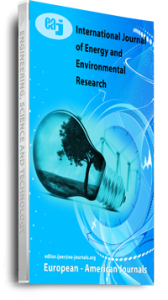The objective of this research is to isolate and identify hydrocarbon-degrading bacteria for biopolymer synthesis and application in the augmentation of Nigerian heavy crude oil recovery. MEOR refers to the process of injecting either indigenous or non-indigenous microbes into hydrocarbon reserves. Injecting microorganisms with nutritional broth facilitate the formation of essential metabolites such as biosurfactants, biopolymers, and gases, resulting in decreased interfacial tension, viscosity modification, and mobility control. It is environmentally friendly, less expensive to implement, and requires minimal or no changes to the existing infrastructure. A soil sample from a hydrocarbon-contaminated site in Ogoniland was collected and sent to a laboratory for physicochemical and microbiological investigation. Bacillus sp, Pseudomonas sp, and Klebsiella sp were biochemically identified after screening three isolates for biopolymer production using Sudan black solution. To assess the ideal growth and biopolymer synthesis capability under reservoir conditions, a variety of pH, temperature, salinity, carbon, and nitrogen nutrition sources were applied to selected microorganisms. Peptone is the optimal nitrogen source for Bacillus sp, glucose is the optimal carbon source for Bacillus sp, and glycerol is the optimal carbon source for Pseudomonas sp and Klebsiella sp, as indicated by the results. In addition, the following are the ideal parameter ranges for the three microorganisms: pH 7–8, a temperature range between 25 and 350 degrees Celsius, and a salinity range between 0.5 and 5% are all desirable conditions for a body of water. After inoculation with microorganisms and the optimum nutrient source, an additional recovery range of 18.33% to 29.09% of the pore capacity was achieved. The post-recovery analysis uncovered a remarkable transformation of heavy crude to light hydrocarbon components by an average of 20.33 percent with glucose and 97.27 percent with peptone.
Keywords: Bacillus sp., Microorganisms, Pseudomonas sp and Klebsiella sp, biochemical characterization, biosurfactant, physicochemical and microbiological analyses., tertiary recovery

